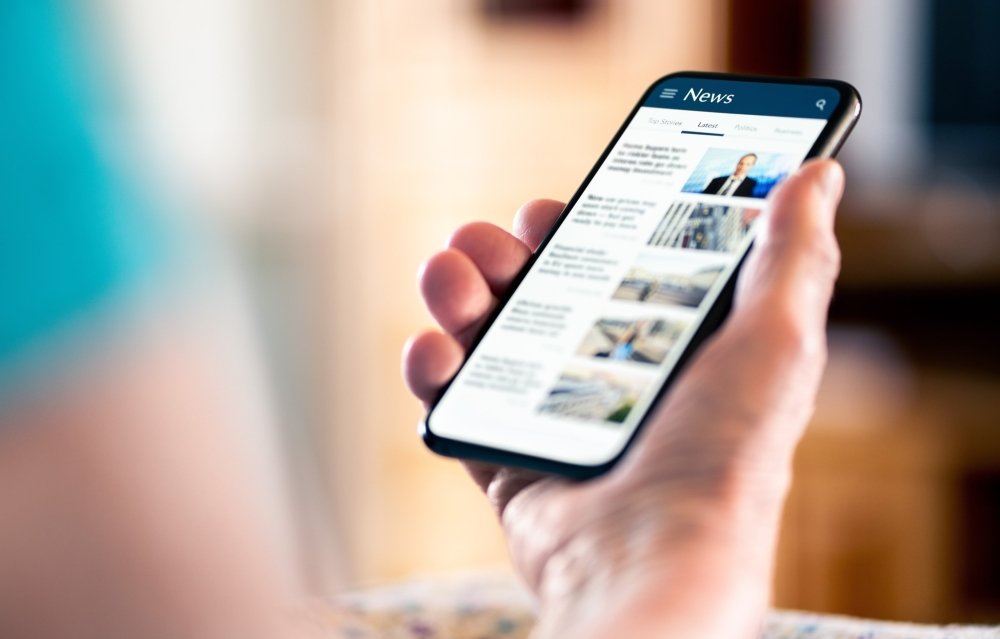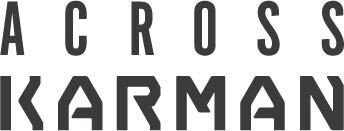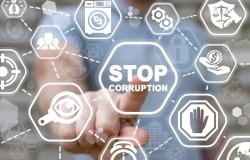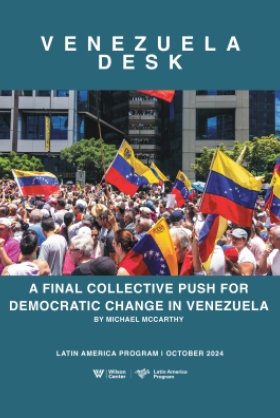Elections and Social Media – Questions and Lessons for Brazil

Shutterstock | Tero Vesalainen
It is by now indisputable that the revolution in media technology brought about by the advent of social media has had substantial implications for politics. This is unsurprising when we consider how ubiquitous our access to social media platforms has become, through the mobile phones that we carry around most of our waking hours, plus the voluminous evidence in the social sciences that has established the causal impact on the political behavior of earlier media technologies, such as TV or radio in the 20th century [i]. Yet it has also become clear that social media are different from previous technologies, and in ways that make its political effects potentially very distinct.
Brazil has been at the forefront of social media adoption, and that very much applies to politics as well. From the early days of Orkut through the rise of Facebook and WhatsApp, all the way to the current 2024 standoff between the Brazilian Supreme Court and Elon Musk’s X/Twitter, it seems that politics in Brazil has, for the past decade and a half, taken place online, to a remarkable extent. As we will see, the implications have been potent and will remain with us for the foreseeable future. In that sense, Brazil’s case is both a reflection and, in some respects, a harbinger of transformations that affect literally the entire world.
In this essay, I will try to go over some of the things we have already learned about the specific impact of social media platforms on electoral politics, as well as some of the key questions that remain unanswered. From that discussion, my key goal is to draw lessons and potential policy considerations for Brazil. Importantly, this is not meant to discount the profound effects of these technologies on political engagement beyond elections; still, in a democratic setting as Brazil, fortunately, continues to be, elections are an inescapable focal point of our political lives.
What makes social media different?
The way in which media technologies have impacted how voters and politicians interact was usually in their roles as a means for accessing information: people can get informed about politics by watching TV or listening to the radio or by reading newspaper coverage of what politicians are up to. To some extent, politicians – and more broadly, politically motivated agents – could try to (and did and do) use those media to convey their messages, but they were fundamentally scarce from that perspective. There are only so many channels or stations or outlets, and space in them is at a premium.
Because of this, the impact of those media on politics came in two separate flavors: accountability and propaganda. On the former, the key lesson from the empirical evidence is that media technologies would tend to increase the accountability facing politicians unless they happened to displace some other technology that was better suited to providing information on their actions [ii]. On the latter, the evidence makes clear that media technologies can be very effective tools of mobilization and persuasion, but that requires control of content, which is often very expensive and accessible to a limited number of actors [ii]. As a result of that, competition in media markets turned out to be a powerful tool for accountability and against capture by political interests [iv].
Social media differ significantly from this traditional picture in two very important ways. First, to borrow some of economists’ jargon, these platforms impose negligible barriers to entry when it comes to the production and dissemination of content. Few of us can broadcast content on radio or TV, or even print media, but pretty much each and every one of us can and does that on a variety of social media platforms. Second, and just as importantly, social media are built for two-way communication. Our ability to reach out directly to other people, coordinate our actions, and share our views with them through social media is essentially unparalleled concerning any other tool previously available in human societies.
Why does it matter?
Given the role of traditional media technologies in holding politicians accountable, along with the importance of controlling content for effective propaganda and capture of media for political purposes, the intuitive conclusion would most likely be that social media represents an unprecedented tool for democracy. Government censorship would be a thing of the past, and ordinary citizens would be more empowered than ever, by expressing their views and engaging in all sorts of collective action.
In fact, this is a fair description of the early views on the impact of social media. Coming out of the Arab Spring in 2011, it became fashionable to declare that social media was a revolutionary tool for activism and would be the scourge of authoritarian and/or unresponsive governments.
It is probably unnecessary to spend too much time elaborating on the fact that the view from 2024 seems very different. But it is very instructive to ask ourselves: what were we missing in those early days? As it turns out, the very features that seemed to mark social media as a distinctively democracy-enhancing technology are at the heart of why it has failed to deliver on that promise, and then some.
The key point is that the very low barriers to entry and the two-way communication feature were available not only to citizens but to politicians as well. If right at the beginning social media platforms were used by voters to explore new forms of political engagement, it didn’t take long for the “supply side” of politics to respond [v]. Politicians quickly realized that they could use those platforms to reach out to voters, reinforce the allegiance of their supporters, and in that way achieve their political goals without necessarily having to become more responsive to voters [vi]. Even dictators, like Vladimir Putin, soon realized that, while censorship had become much harder and the danger posed by protests more acute, the very abundance of information on social media could be used as a tool for demobilization [vii]. In the memorable words of Steve Bannon, “to flood the zone with shit” became the go-to tool of dictators and political entrepreneurs alike [viii]. Where before there had been gatekeepers such as mainstream newspapers or broadcast TV channels, we switched to an era of massive saturation and free-for-all, which political actors more than gladly exploited.
This was made even more acute in the era of algorithmic social media. While initially platforms were relatively unsophisticated in the way content was organized and presented to users, they soon realized that their ability to monetize the users’ attention was greatly enhanced by increasing engagement. The fine-tuned algorithms (and quasi-addictive properties) added to many of the most widely used and influential social media platforms (Facebook, Instagram, Twitter) were a game-changer from a political perspective because they served as a catalytic turbocharger for another characteristic of social media: their propensity to form networks of like-minded individuals.
Another key feature of social media is that it tends to form what social scientists would call “homophilic” networks: you are more likely to follow other individuals who share common interests with you and who share content you find congenial (“pro-attitudinal” in jargon). The algorithms helped make that sharper, with the added feature that, because engagement turned out to be stronger for more extreme content, they would tend to push users to more extreme versions of their initial preference. In other words: social media was also a powerful tool for polarization, and, especially, the “negative” kind whereby individuals are linked together by a common dislike towards out-groups.
All that said, what has been the net impact of social media? Has it been a tool for citizen empowerment and mobilization or for disaffection and polarization? The evidence is multifaceted: social media use is causally linked with greater levels of political information and mobilization, but also greater distrust in institutions and higher levels of polarization as well as support for populist politicians (though not always) [ix].
What about Brazil?
All of these points have clear resonance for Brazil. Not long after the Arab Spring, the stunning and unexpected protests of June 2013 were already a manifestation of the power of social media – especially Facebook, at the time – as a tool for mobilization and collective action. The harnessing of that power for election strategy became clear by 2014, when rumor-mongering about candidates’ positions was rampant on Facebook and largely untraceable to official campaigns, indicating the enormous potential of the new environment for disinformation.
If 2014 was already a “Facebook election”, few were prepared for the “WhatsApp” version that in 2018 would sweep to a hitherto unthinkable victory the candidacy of a relative outsider like Jair Bolsonaro. The revolutionary use of social media for mobilization and strategic (dis)information, as well as the fanning of the flames of polarization that platforms like Facebook and Twitter had already been engendering, was indisputably a key element for the rise of Bolsonaro. By the “TikTok” election of 2022, it was clear that the cycle seemed unstoppable. Even in the current 2024 midterm cycle of municipal elections, though it seems as if old-school factors such as incumbency and traditional media are still important (especially at the local level), the underlying trend is very much alive. For instance, the meteoric rise of Pablo Marçal in the race for the mayoral chair in São Paulo, while it may turn out to be rather short-lived, serves as a reminder that, in the world of social media, the power of traditional gatekeepers is greatly diminished.
Not the least because of this undeniable impact, Brazil has also been at the forefront of policy initiatives to try and deal with the new landscape. The current battle between Musk’s platform and the Supreme Court, personified by the now worldwide-known Justice Alexandre de Moraes, highlights the perils of a very aggressive stance towards the dissemination of content deemed to constitute “misinformation”. This stance may have been necessary when, under Bolsonaro, Brazilian democracy was truly imperiled, but even leaving aside the very real and justified concern with the risk of arbitrary restrictions on freedom of speech, it is worth asking whether such an approach is even sustainable. After all, if the challenges posed by social media are so intimately tied to their foundational technological characteristics, as argued above, it seems unlikely that any judge or court could stem the tide indefinitely.
The difficulties are put into even starker relief when we consider another defining trait of social media: its global reach. Unless a country has the state capacity and sheer scale that has enabled China to create and sustain its separate online ecosystem, the cost of insulating from specific kinds of content seems prohibitively high.
As a result, in the absence of broad cross-border policy coordination that for now seems highly unlikely, it is safest to bet on a continuation of current patterns: increased polarization and unpredictability, and the instability that results from that. We should brace ourselves for an extended unpleasant journey through the proverbially flooded zone.
REFERENCES
[i] Prat, A., & Strömberg, D. (2013). The political economy of mass media. In Advances in Economics and Econometrics: Theory and Applications (Vol. 2, pp. 135-187). Cambridge University Press.
[ii] Strömberg, D. (2004). Radio’s impact on public spending. The Quarterly Journal of Economics, 119(1), 189-221.
Gentzkow, M. (2006). Television and voter turnout. The Quarterly Journal of Economics, 121(3), 931-972.
Enikolopov, R., Petrova, M., & Zhuravskaya, E. (2011). Media and political persuasion: Evidence from Russia. The American Economic Review, 101(7), 3253-3285.
Gentzkow, M., Shapiro, J. M., & Sinkinson, M. (2011). The effect of newspaper entry and exit on electoral politics. The American Economic Review, 101(7), 2980-3018.
[iii] Durante, R., & Knight, B. (2012). Partisan control, media bias, and viewer responses: Evidence from Berlusconi's Italy. Journal of the European Economic Association, 10(3), 451-481.
Yanagizawa-Drott, D. (2014). Propaganda and conflict: Evidence from the Rwandan genocide. The Quarterly Journal of Economics, 129(4), 1947-1994.
Adena, M., Enikolopov, R., Petrova, M., Santarosa, V., & Zhuravskaya, E. (2015). Radio and the rise of the Nazis in prewar Germany. The Quarterly Journal of Economics, 130(4), 1885-1939.
[iv] Besley, T., & Prat, A. (2006). Handcuffs for the grabbing hand? Media capture and government accountability. The American Economic Review, 96(3), 720-736.
[v] Campante, F., Durante, R., & Sobbrio, F. (2018). Politics 2.0: The multifaceted effect of broadband internet on political participation. Journal of the European Economic Association, 16(4), 1094-1136.
[vi] Bessone, P., Cameron, L., & Thompson, P. (2022). Social media and political mobilization in repressive regimes (Working paper).
[vii] Enikolopov, R., Petrova, M., & Zhuravskaya, E. (2020). Media and political persuasion in autocratic regimes (Working paper).
[viii] Starr, P. (2020). The flooding of zones: Information warfare and post-truth politics. Journal of Communication, 70(5), 730-748.
[ix] Allcott, H., Gentzkow, M., & Yu, C. (2020). Trends in the diffusion of misinformation on social media. Research & Politics, 7(2), 1-8.
Fergusson, L., & Molina, O. (2020). Media and political engagement in a divided society: Evidence from Colombia. Journal of Development Economics, 147, 102558.
Levy, R. (2021). Social media, political participation, and the influence of fake news. Journal of Politics, 83(1), 343-356.
Guriev, S., & Treisman, D. (2021). Spin dictators: The changing face of tyranny in the 21st century. Princeton University Press.
Fujiwara, T., Meng, K., & Yang, D. (2024). Media, misinformation, and electoral outcomes: Evidence from a large-scale experiment (Working paper).
About the Author

Filipe Campante

Brazil Institute
The Brazil Institute—the only country-specific policy institution focused on Brazil in Washington—aims to deepen understanding of Brazil’s complex landscape and strengthen relations between Brazilian and U.S. institutions across all sectors. Our mission is to provide thoughtful leadership and innovative ideas to help democracies evolve and enhance their capacity to deliver results. We achieve this by producing independent research and programs that bridge the gap between scholarship and policy, while serving as a hub for policymakers, scholars, and private sector leaders. Read more












